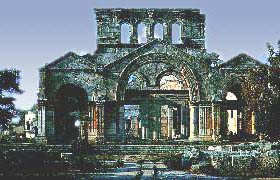The appeal of holiness
Late antiquity — especially the fourth and fifth centuries — was a special period for the quest for the holy. Holiness is a quality of being set apart from the world, and so closely associated with God as to participate in God's power and purity. The Scriptures are holy. Places can be holy if they connect with holy people, and especially with Christ: Jesus' birthplace in Bethlehem and the site of his Resurrection are holy places of prayer and pilgrimage. Things that are connected with holy people, such as the chalice of the Last Supper, are holy. Things used liturgically can be holy. Times of year, such as Lent, are holy. There are activities that are holy, such as fasting. Engaging ourselves in these holy books, places, things, times, and activities can open us to holiness, and gradually sanctify us.
- Different Christian traditions, however, disagree as to what's holy and where to find it and how to connect with it.
In the East in Christian late antiquity, holiness was found particularly in the holy man or woman who, Peter Brown says, adopted "stances that were the exact inverse of those 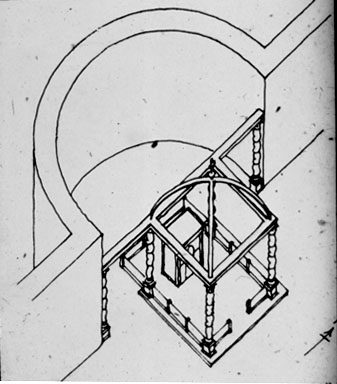 connected with the exercise of real power," that is, worldly political and commercial power. A hermit who lived on top of a pole for decades was very much the opposite of an Emperor in a palace, and it was the hermit that throngs of people wanted to approach in faith, and through whom they could feel the presence of God. In the West, people typically sought the holy not among the living but among the relics of the holy dead in certain special places, the shrines. On this webpage we'll look at two shrines, one in Rome and one in Nola, and briefly at one Holy Man, Simeon.
connected with the exercise of real power," that is, worldly political and commercial power. A hermit who lived on top of a pole for decades was very much the opposite of an Emperor in a palace, and it was the hermit that throngs of people wanted to approach in faith, and through whom they could feel the presence of God. In the West, people typically sought the holy not among the living but among the relics of the holy dead in certain special places, the shrines. On this webpage we'll look at two shrines, one in Rome and one in Nola, and briefly at one Holy Man, Simeon.
St. Peter's shrine
Well, to tell the truth, it's not 100% certain that this is St. Peter's shrine. But it could be. The sketch represents the conjectured original "aedicula" (a shrine for a small statue) which was uncovered during excavations under St. Peter's Basilica in Vatican City in 1939. It appears to date from the second century and, to judge from the graffiti, it was the focus of popular veneration. It was apparently part of an old Roman cemetery.
On the site of this shrine, the Emperor Constantine ordered the construction of a basilica in about 323. Below is a representation of what "the old St. Peter's" looked like. One reason for thinking that this church was deliberately sited over a place that was already considered holy is that it's sited in a location that was awkward to build on: it's on the slope of a hill. Perhaps this is where St. Peter was understood to have been buried in around CE 64. The original aedicula is in the far wall.
In the sixteenth century "old St. Peter's" was razed to the ground, and the current St. Peter's Basilica began to be built. Since the Romans called the hill on which the basilica is built "Vatican Hill," the Roman Catholic papal governance and administrative complex built around St. Peter's is commonly called "the Vatican."
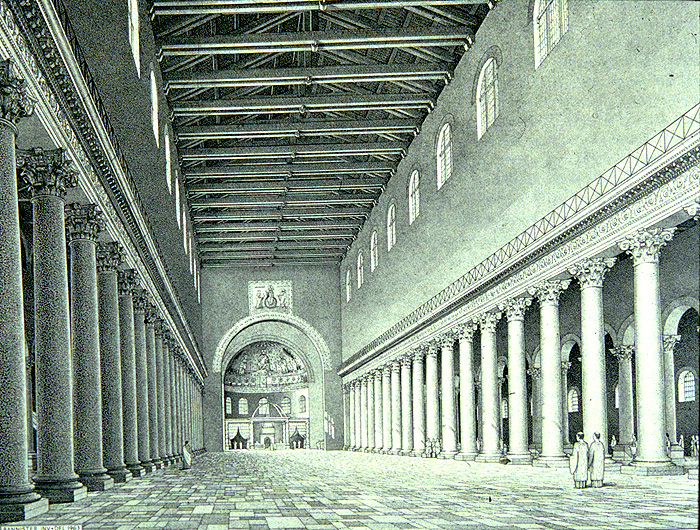
Nola
One of the greatest Christian building projects of the fifth century was a basilica for the remains of Felix, a bishop of Nola who had died during the Decian persecution. Today it would be rare for anyone to have a clue who Felix was. He was technically a confessor rather than a martyr, since he did not die in the process of confessing his faith (though his treatment during the persecution did hasten his death), and he was one of the first confessors to receive a saint's shrine. This shrine was the special interest, if not obsession, of one Paulinus (d. 431), a poet of high birth who converted to Christianity and took on a quasi-ascetic and philanthropic lifestyle. Paulinus networked with some prominent contemporary Christians, including Augustine, Jerome, and Melania. In Augustine's time this shrine was perhaps the foremost pilgrimage destination in the western Empire, aside from St. Peter's in Rome. You can find the remains of his basilica in "Cimitile" (shown here), a cemetery quarter of Nola, about 25 km. north-northeast of Naples. A letter of Paulinus' is in Hayes' Church and Society in Documents, though it's not on the syllabus for the course.
Thanks to Sergio Sommese, a web visitor from Cimitile, Italy, for the following information and pictures as well!
The area now called Cimitile was a necropolis and rustic village in the early Imperial age. The confessor Felix was buried here at the end of the third century, and a shrine was built next to his grave some years after that. The development of the whole complex had its climax after Paulinus, a rich Roman senator, and his wife Terasia, settled near Felix' grave in 395. Paulinus restored the religious buildings that were already there and built a new basilica, houses for the poor, and a monastery. He and several other Christian writers composed poems every year to celebrate Felix' festival. When in 409 Paulinus became bishop of Nola , he continued to live near the shrine, where after his death in 431 he was also buried. The town of Coemeterium (i.e., Cimitile) was founded in the area surrounding the shrine. Nola was an episcopal seat till the end of the 16th century. The monumental complex is made up of seven paleo-Christian and medieval buildings dedicated to Felix and several other saints. The shrine is decorated with paleo-Christian mosaics, and the basilicas with medieval frescoes, and the apse of St.John's Church with rich marble.
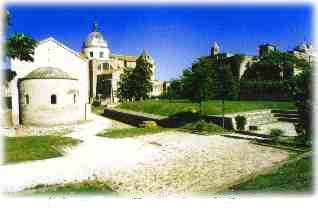
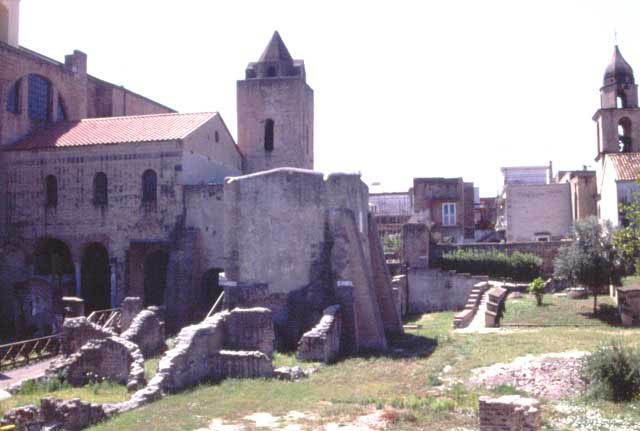
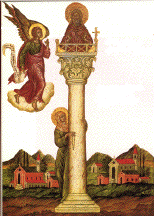 Simeon (or Symeon) the Stylite
Simeon (or Symeon) the Stylite
>
In the fifth century Simeon sat forty years on a pillar in the Syrian desert. When people could visit Syria, you could see the remains of the basilica of Simeon sixty kilometers from Aleppo, Syria. The basilica was built around Simeon's pillar after his death. A bit of his pillar is still there, but it has been worn down by centuries of pilgrims who took pieces of it home.
Simeon may seem to us an oddity, and indeed his form of witness was condemned and prohibited in the West. But he remains one of the heroic saints of Eastern Orthodoxy. Simeon was followed by hundreds of other pillar saints over the centuries; the last one recorded was a nineteenth-century Russian stylite.
Below is a picture of the church that was built on the holy site associated with Simeon.
